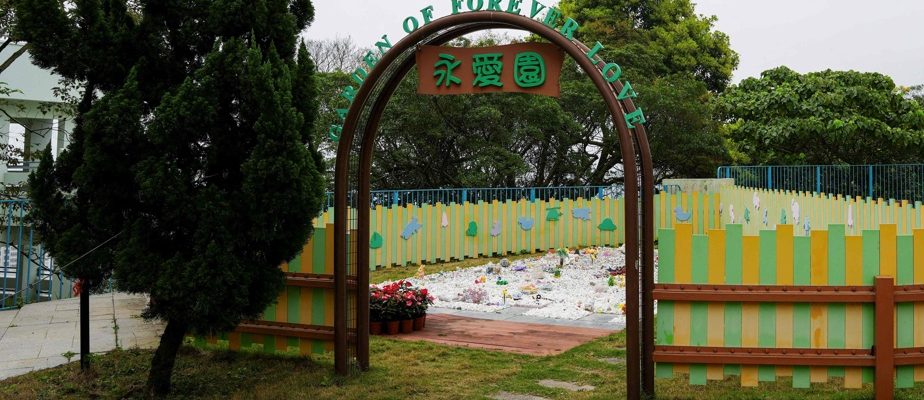(Hong Kong) Behind the doors of the building with its ocher facade, lined with arches, a unique structure has been established in Hong Kong: a crematorium for fetuses who died at less than six months of gestation, which until 2018 did not were not returned to the families.
With its garden where ashes can be scattered and its architecture particularly inspired by Le Corbusier, the House of Eternal Love offers a soothing setting for suffering families.
“Our first mission is to ease the pain of the families and try to reassure them during the funeral ceremony and farewells,” explains Benny Lee, director and co-founder of Breadstudio, which designed this project.

PHOTO CELIA CAZALE, AGENCE FRANCE-PRESSE
Paul Mui and Benny Lee
Before the cremation, offered free of charge, a ceremony takes place, modeled on the bedtime ritual of toddlers.
After placing a box containing the remains of the fetus in a cavity inside a small altar, the parents turn off the light and close the door to the room, “as if they were putting their baby to bed” for the night, details Mr. Lee for AFP.

PHOTO PETER PARKS, AGENCE FRANCE-PRESSE
“We want families to feel that their loved one is not leaving for a wasteland but is returning to nature,” adds Paul Mui, his partner within this structure created in 2022.
Thrown into landfill
Yet this is the situation that has long prevailed in Hong Kong, where regulations stipulated that the remains of fetuses who died at less than 24 weeks must be considered “medical waste” and thrown into landfill.
But the situation changed after authorities shocked Hong Kongers in 2017 by refusing to grant the request of a couple who wanted to recover the body of their 16-week-old fetus to give it a burial.
A petition signed by more than 10,000 professionals, including doctors, nurses and religious leaders, finally made something happen.
In 2018, the government amended the regulations on these fetuses, opening up the possibility of cremation services.

PHOTO CELIA CAZALE, AGENCE FRANCE-PRESSE
The new text also allowed the creation of squares for the burial of these fetuses, gardens maintained by the government.
Lok opted for one of them, in Cape Collinson Cemetery in eastern Hong Kong.
She was forced to abort at 20 weeks of pregnancy, she explains to AFP, using a pseudonym.
In this cemetery, the grave of the fetus is marked with a stone on which a sleeping elephant is painted, with the words “in memory of our precious son Luka”.

PHOTO CELIA CAZALE, AGENCE FRANCE-PRESSE
“Having a funeral plan helped me feel at peace. When everything was settled, it marked the end for me” of a process, confides Lok. “No one wants the bodies of their family members to be treated like waste.”
“Social taboo”
But the fate of dead fetuses often continues to be a “social taboo” in Hong Kong, as elsewhere, notes Tsei Mei-yee, who initiated the petition.

PHOTO PETER PARKS, AGENCE FRANCE-PRESSE
Tsei Mei-yee
After two miscarriages, this young woman created the Toddler Support Group, an association intended to advise bereaved parents and support those trying to recover the remains of their fetus.
Very often, caregivers “tell parents ‘we’re going to take good care of your baby,’” she says. “But for hospitals, that means treating them ‘properly’ like medical waste.”
For Lok, who would have “suffered twice” if his fetus had been treated as “medical waste”, this development is “important”.
During her pregnancy, she bought two stuffed eggs. After a final goodbye to her “little egg”, she opened an Instagram account dedicated to Luka.
We see the stuffed egg all smiles in front of cherry blossoms in Japan, on board a train to Taiwan, or crossing a bridge in Korea…
“One is buried with him, the other travels the world with us,” she explains.
